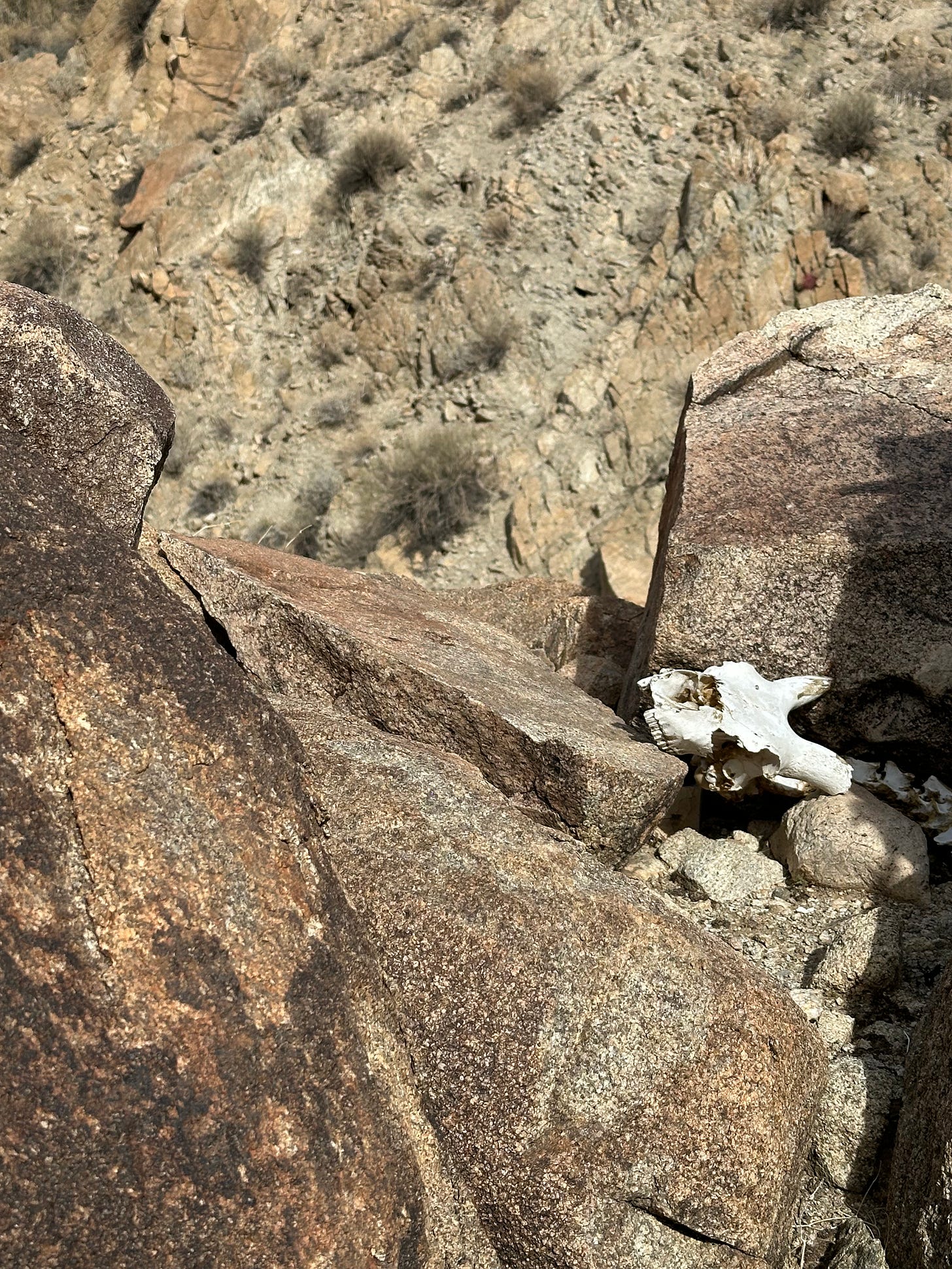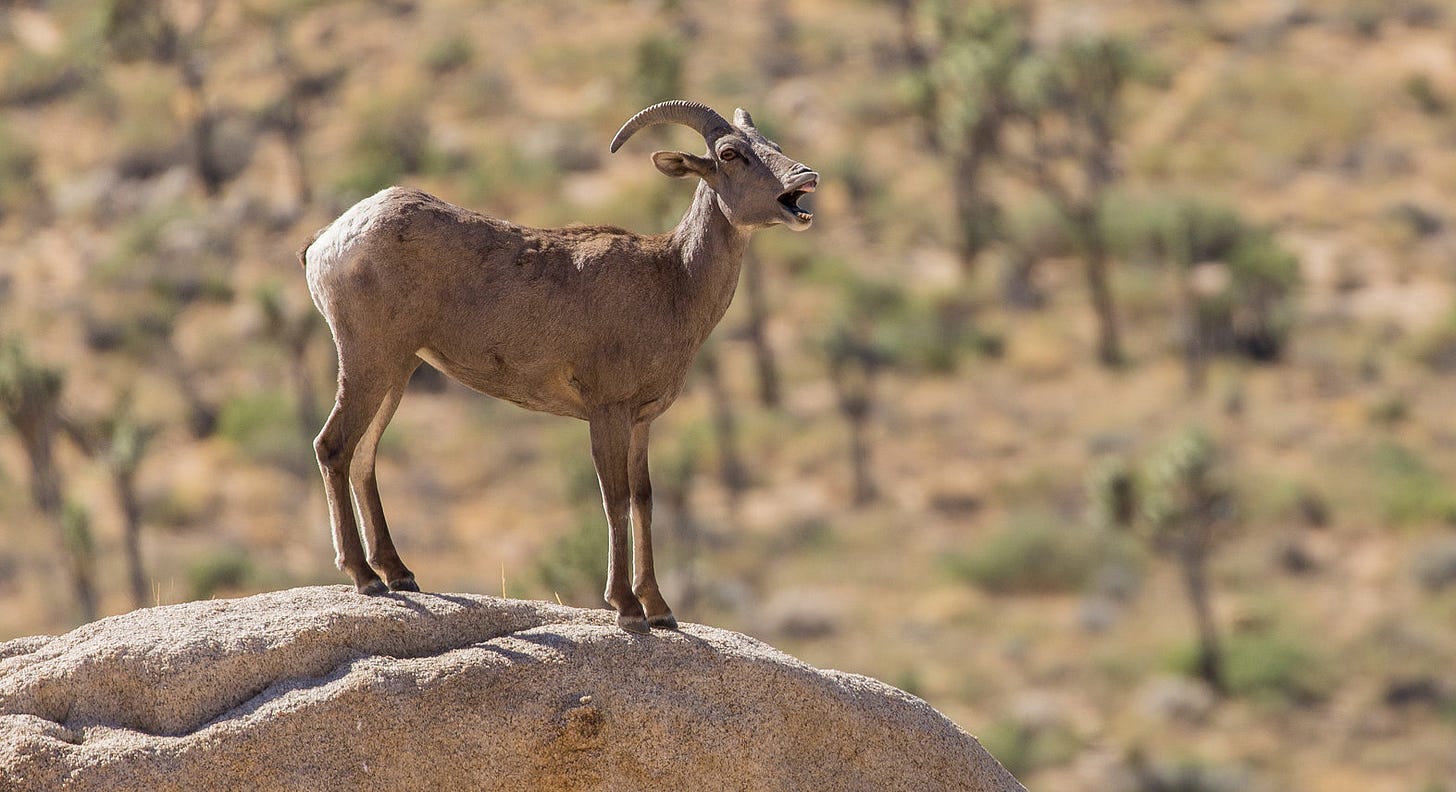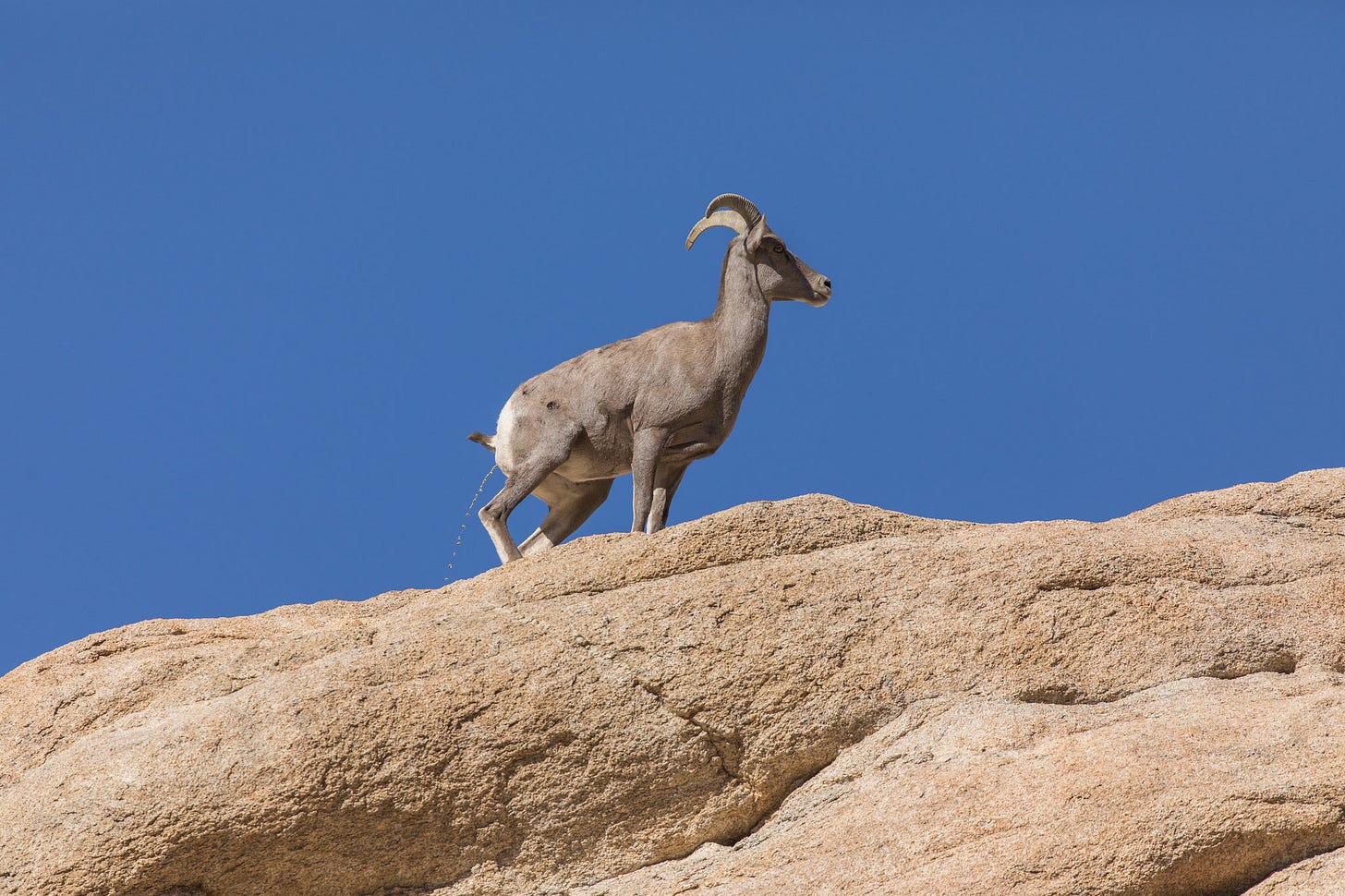“Where can I see mountain goats?”
It’s a question I hear often as a volunteer on the Barker Dam and Hidden Valley trails. The craggy ridgelines and dry washes of Joshua Tree National Park certainly feel like mountain goat territory. But out here in the Mojave, it’s not goats you’ll spot. It’s sheep—desert bighorn sheep.
No judgment, of course. I’m always happy to gently separate the goats from the sheep and share what I know about one of the park’s most elusive and awe-inspiring creatures. I tell visitors they probably won’t see bighorn, but they might try Barker Dam in the early hours and Ryan Mountain or the 49 Palms Oasis trails if they are up to more strenuous hikes. But wherever the bighorn are, water—or the hope of water—is usually nearby.

Born to Bound
There’s something magical about seeing bighorn sheep in the wild. One moment you’re alone among sun-baked rocks, and the next, a ram materializes from the boulders like a desert mirage. Their tan coats blend almost perfectly with the weathered granite, although sometimes their white butts give them away. When they move, it’s with the confidence of an animal born to scale cliffs. What looks to us like a sheer wall is, to them, just another path.
Around 200 bighorn live in the vast sprawl of Joshua Tree National Park, divided into at least three loosely defined populations: one group ranges around the Wonderland of Rocks, Queen Mountain, 49 Palms, and Pine City; another near Cottonwood and its life-sustaining oases; and a third in the far west around Keys View. Still more roam remote sections of the Marine base.

Once, these sheep likely roamed far and wide, connecting with other herds across what is now the California desert. Today, Highway 62 and its corridor of development act as barriers, cutting off potential exchanges between the park’s herds and those on the base.
And yet they persist. They adapt. They endure.
Water Is Life
Unlike their relatives in wetter regions, desert bighorns can go for days—or even weeks—without drinking, especially in cooler months. Instead, they derive moisture from their food: grasses, desert willow, and barrel cactus, among other plants. Their bodies are adapted to minimize water loss, their kidneys concentrating urine, and their blood regulating temperature to avoid overheating.
But water is still a necessity—especially for nursing ewes and young lambs. During drought years, which are now more common thanks to climate change, bighorns must travel long distances between feeding grounds and the few remaining seeps and springs. Natural oases like 49 Palms, Cottonwood, and isolated rock tanks become lifelines.
Lambs on the Ledge
I’ve followed fresh tracks startlingly close to Twentynine Palms homes but haven’t heard that they come into neighborhoods to munch on landscaping. Have you seen a bighorn near town? If so, we’d love to hear from you!
One of my first bighorn encounters happened climbing and stumbling a little up Ryan Mountain’s endless stone steps. Sweat pouring down my back, I paused to catch my breath and looked up—only to see a small herd cross the trail above me. Rams with their curled horns, ewes, and at least one lamb all paused to glance down at me before disappearing upslope as though gravity had no hold on them. A few minutes later, I ran into a park biologist who nodded knowingly. “Yep,” he said. “They’re up there almost every day this time of year.”
Of course they are. While I plod step-by-step, the bighorn fly.
Marine base resource managers refill wildlife water holes known as guzzlers by helicopter
A Call for Corridors
There’s a larger story here too. Bighorns, like so many desert species, face shrinking habitat and increased isolation. As resource managers and conservationists at the park and the Marine base work to study and support these animals, one of the big concerns is connectivity—how to allow isolated populations to mingle, share genes, and remain strong.
Wildlife corridors—safe passages across human-made barriers—are essential not just for bighorns but for bobcats, tortoises, and foxes. Supporting regional conservation efforts and respecting posted closures like the current shutdown of the Forty-nine Palms Oasis trail are small ways we can help support these incredible animals.
It’s tempting to romanticize bighorn sheep. And why not? They’re tough, graceful, elusive, and resilient. But they’re not mythical creatures. They’re living, breathing residents of our desert home—part of the same ecosystem we all depend on, even if we don’t see them every day.
So next time visitors ask me where to find “mountain goats,” I’ll smile, share a few favorite spots, and quietly hope they have their own magical moment in the rocks.
Until then: Stay curious. Stay respectful. And may your path be a little more sure-footed than mine. And remember, don’t be sheepish (sorry!)—be a GOAT—keep exploring!
There’s lots more to say about bighorns; we’ll be coming back to them in a few months.
Leave your thoughts in the comments below. Please note that we do not allow anonymous comments. Please be sure your first and last name is on your profile prior to commenting. Anonymous comments will be deleted.
Feel free to share this article!
Help us reach our 2025 goal of $10,000 in subscriptions! Upgrade to a paid subscription for just $5 per month or $50 per year.
Would you care to donate more than $100? Our Paypal account is up and running!
The Desert Trumpet is published by Morongo Basin Projects, a 501c3 charitable organization. Note that donations in excess of $100 are tax deductible to the extent allowed by law, and your subscription/donation will be listed as Morongo Basin Projects on your statement.






Saw this herd running up Jackass Trail by my house a few years back. This is probably the same herd I saw hanging out along the Boyscout Trail. https://share.icloud.com/photos/0f3Fn3YA8xhMVM42O4jV8Yj7Q